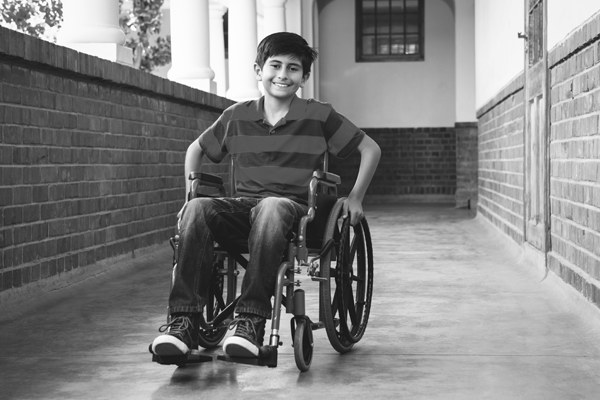Common Infections Associated With Childhood Stroke
Common Infections Associated With Childhood Stroke https://pediatricsnationwide.org/wp-content/themes/corpus/images/empty/thumbnail.jpg 150 150 Kevin Mayhood Kevin Mayhood https://secure.gravatar.com/avatar/bd57a8b155725b653da0c499ae1bf402?s=96&d=mm&r=g- November 03, 2015
- Kevin Mayhood
Routine vaccinations appear to be protective.
Minor infections, including the common cold, appear to trigger arterial ischemic stroke (AIS) in children, an international study shows.
At the same time, a full or nearly full regimen of childhood immunizations appears to be protective in children.
The research, published in the journal Neurology, also indicates long-suspected cold medicines don’t precipitate AIS. Although decongestants are in the same family of drugs as stroke-triggering cocaine and amphetamines, the authors found no association between stroke and the medicines.
Pediatric stroke is rare, occurring in only about 2.5 per 100,000 children. No matter the age when a stroke occurs, most suffer permanent physical and/or cognitive disabilities as a consequence.
“For pediatricians and other first line primary care providers and parents, this study provides evidence that childhood vaccinations are helpful in protecting children from what is certainly an uncommon neurologic disease, but a neurologic disease that has very high morbidity,” says Heather Fullerton, MD, director of the Pediatric Brain Center at the University of California San Francisco Benioff Children’s Hospital and lead author of the research.
Fullerton is the lead investigator of the Vascular Effects of Infection in Pediatric Stroke (VIPS) study, which compared 355 cases of confirmed AIS and 354 stroke-free controls in this research. The children live in 37 sites in nine countries, on five continents.
The VIPS researchers found that children who had received only some or no recommended vaccinations for their area of the world were 7.3 times more likely to suffer a stroke than children who’d received all or most of the vaccinations.
Affirming an earlier, California-based study by Fullerton and others, this research showed that minor infections appear to have a short-lived effect on stroke. The VIPS study found 18 percent of children with stroke reported an infection in the prior week, conferring a 6.3-fold increased risk. But there was no association between AIS and infections suffered in the prior month or six months.
Colds were the most common infections reported, followed by other minor upper respiratory infections. Simple measures to prevent transfer of infections, such as hand-washing and covering the mouth when sneezing and coughing may therefore prevent stroke, Fullerton says.
“A kid who is susceptible can get something out of being proactive,” she says. “This can be empowering to families, especially those with a child with a known risk for stroke, such as congenital heart disease, lupus or sickle cell anemia, or who have already had one stroke.”
In the VIPS analysis, cases in which children suffered major infections such as meningitis, sepsis and endocarditis — which are already associated with stroke — were excluded.
The majority of children in the study appeared healthy before they had a stroke. Because infections common to many children are associated to stroke in so few, the researchers conclude the stroke patients have an unknown susceptibility.
While investigating the link to colds, the researchers found cold medicines were used in similar low numbers among the stroke cases and controls.
“We can confidently say stroke is not related to the medications,” Fullerton says. “It’s related to something other than the medications — probably the effect of the infection itself.”
José Biller, MD, Chair of the Department of Neurology at Loyola University Stritch School of Medicine, and Geoffrey Heyer, MD, director of the Complex Concussion Clinic at Nationwide Children’s Hospital and assistant professor of clinical pediatrics at The Ohio State University College of Medicine, wrote an editorial in the same issue of Neurology saying that this research shifts the view on infection, vaccinations and stroke.
Though more study is needed to clarify how infections increase stroke risk and vaccines are protective, Biller and Heyer say, “Conceivably, this information will be seminal in drafting further stroke prevention strategies for childhood AIS.”
For the next phase of the VIPS study, the researchers have proposed to investigate whether children suffering from a stroke associated with infection are suffering from an unusual infection or combination of infections or if the culprit may be an unusual host response. Either outcome may yield targets for therapies aimed at preventing pediatric stroke.
References:
- Fullerton HJ, Hills NK, Elkind MS, Dowling MM, Wintermark M, Glaser CA, Tan M, Rivkin MJ, Titomanlio L, Barkovich AJ, deVeber GA, VIPS Investigators. Infection, vaccination, and childhood arterial ischemic stroke: Results of the VIPS study. Neurology. 2015 Oct 27;85(17):1459-1466.
- Biller J, Heyer GL. A call for new attitudes on infection, vaccination and childhood stroke. Neurology. 2015 Oct 27;85(17):1438-9.
- Hills NK, Sidney S, Fullerton HJ. Timing and number of minor infections as risk factors for childhood arterial ischemic stroke. Neurology. 2014 Sep 2;83(10):890-7.
About the author
-
Kevin Mayhoodhttps://pediatricsnationwide.org/author/kevin-mayhood/
-
Kevin Mayhoodhttps://pediatricsnationwide.org/author/kevin-mayhood/April 25, 2015
-
Kevin Mayhoodhttps://pediatricsnationwide.org/author/kevin-mayhood/April 25, 2015
-
Kevin Mayhoodhttps://pediatricsnationwide.org/author/kevin-mayhood/April 25, 2015
- Post Tags:
- Concussions
- Neurology
- Stroke
- Vaccines
- Posted In:
- In Brief







